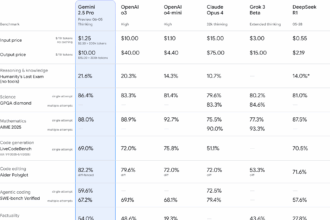Table of Contents
ToggleAI Reveals Likely Authors of Ancient Biblical Texts
Artificial intelligence has uncovered likely authors behind some of the Bible’s oldest books by analyzing hidden language patterns in the Hebrew Bible’s Enneateuch. This breakthrough sheds light on longstanding debates over biblical authorship. The research team, led by Duke University and overseen by mathematician Shira Faigenbaum-Golovin, scanned the first nine books using an AI model specialized in linguistic analysis.
Breakdown of Distinct Writing Styles
The AI identified three distinct writing styles within the texts. These correspond to different original authors or scribal groups, confirming theories in biblical scholarship. The styles belong to the Priestly source, the Deuteronomistic History, and the Book of Deuteronomy. Differences emerged even in use of common function words such as “no,” “which,” and “king.”
Interestingly, some parts, like sections of the Ark Narrative in 1 Samuel, did not fit any of these categories, hinting at additional unknown authorship layers. This finding prompts further inquiry into the Bible’s complex composition.
Research Method and Team
Starting in 2010, Faigenbaum-Golovin initially used handwriting analysis on ancient pottery. The current project integrates expertise from mathematicians, linguists, archaeologists, and computer scientists. This multidisciplinary approach allows the team to combine scientific tools with scriptural study rigorously.
Future Implications
- The AI method can verify authorship of other ancient documents accurately.
- It can help authenticate historical fragments or detect forgeries, enhancing textual scholarship.
- The team plans to apply the technology to other ancient writings to uncover hidden linguistic clues and authorship patterns.
Summary of Key Findings
| Aspect | Details |
|---|---|
| Technique | Custom-built AI linguistic analysis |
| Texts Analyzed | First nine books of the Hebrew Bible (Enneateuch) |
| Main Writing Styles | Priestly source, Deuteronomistic History, Book of Deuteronomy |
| Additional Findings | Unknown style in Ark Narrative of 1 Samuel |
| Applications | Authorship verification of ancient documents and forgery detection |
This research introduces a reliable, AI-driven tool to clarify biblical authorship and advance ancient text studies. It marks a significant step toward combining technology and humanities to resolve historic literary puzzles.
AI Uncovers Bible’s ‘Likely Authors’ as Scientists Reveal Hidden Clues in Ancient Text
Who really wrote the oldest books of the Bible? For centuries, scholars have debated this while flipping ancient scribbles like detectives. And now, the secret might be out—thanks to a clever mix of artificial intelligence and ancient text analysis. Researchers using AI have peeled back layers of biblical history, uncovering hidden language patterns that point to the likely authors behind some of the Hebrew Bible’s oldest books. Yep, the Bible’s authors might finally be stepping out of the shadows.
This breakthrough comes from an international team led by Duke University, who used advanced AI tools to scan the first nine books of the Hebrew Bible, also known as the Enneateuch. Using cutting-edge linguistic analysis paired with a custom-built AI model, they’ve done what scholars before them could only dream of: identifying distinct writing styles within the sacred texts.
But what exactly did they find? Let’s dive in.
Distinct Writing Styles Reveal Different Biblical Authors
The highlight of this research? The AI clearly separated the biblical text into three distinct writing styles. These aren’t just fancy literary flourishes; they suggest at least three different authors or scribal groups were behind the creation of these ancient stories. Imagine the Bible as a grand collaborative project, centuries in the making, with multiple voices and pens involved.
Thomas Römer, a professor at the Collège de France, points out the fascinating details: “We found that each group of authors has a different style – surprisingly, even regarding simple and common words such as ‘no,’ ‘which,’ or ‘king.’ Our method accurately identifies these differences.”
So, it’s not just the big theological statements or story arcs that differ; the AI recognizes subtle language signatures, right down to the way common words are used. That’s like discovering a fingerprint on ancient papyrus!
The Team Behind the Mystery: A Blend of Science and Scripture
Leading this ambitious mission is Dr. Shira Faigenbaum-Golovin, a mathematician who’s been exploring ancient texts since 2010. She started out analyzing handwriting on pottery fragments from around 600 BC. Her passion for combining science with sacred texts has since attracted a diverse team of mathematicians, archaeologists, linguists, and computer scientists.
Together, they turned dry ancient manuscripts into data-rich treasure troves, letting AI uncover clues not easily seen by human eyes. It’s a perfect example of technology and humanities shaking hands across millennia.
Unexpected Surprises: The Ark Narrative’s Unusual Style
While the AI sorted most of the text into three primary writing styles—the Priestly source, the Deuteronomistic History, and the Book of Deuteronomy itself—some chapters didn’t fit neatly into these groups. For example, parts of the Ark Narrative in 1 Samuel surprised the team by not matching any of the known styles.
This anomaly hints at even more complex origins for some biblical passages, suggesting there could be unknown authors or redactors at play. Not all mysteries unraveled, in other words. The Bible still holds stories waiting to be decoded with fresh tools.
Beyond the Bible: AI’s Role in Ancient Document Authentication
The team isn’t just stopping at biblical manuscripts. They envision applying this AI technique to other ancient documents. Got fragments that might be Abraham Lincoln’s handwriting? Or something you suspect is a forgery? This AI model could help verify authenticity by detecting authorial fingerprints hidden in the text.
Faigenbaum-Golovin remarks, “If you’re looking at document fragments to find out if they were written by Abraham Lincoln, for example, this method can help determine if they are real or a forgery.” The potential uses explode beyond religious studies to include history, forensics, and archaeology.
What Does This Mean for Biblical Studies and Research?
The study provides interpretable, statistically significant evidence that biblical authors/redactors have distinct linguistic traits. This marks a milestone for scholarly debates that have often been mired in uncertainty and guesswork.
The methodology *offers a new tool* to address contested questions about the Bible, making interpretations less about speculation and more about data-driven analyses. The AI technique transforms biblical authorship from theological guesswork to testable hypothesis.
Plus, the team plans to push the envelope further by applying the same methods to uncover new secrets lurking in other ancient texts. Who knows what else awaits discovery? Perhaps even more hidden authors, or lost traditions resurfacing through text analysis.
Wrapping Up: Why This Matters
So, why should you care? Whether you’re a scholar, a history buff, or just curious, this AI breakthrough is exciting. It reshapes how we understand one of humanity’s most influential books. The Hebrew Bible isn’t just a static relic but a dynamic text with a complex authorship story, illuminated now by modern science.
It also shows us the power of AI beyond science fiction—demonstrating its real ability to solve mysteries encoded in ancient languages and scripts. And finally, it humbles us by revealing that even texts we think we know well still hide surprises, just waiting to be uncovered by bold new methods.
Isn’t it intriguing to think that artificial intelligence is now one of the key players in exploring our spiritual and historical roots? It’s a conversation starter, an intellectual adventure, and a reminder: The past isn’t dead. It’s speaking, if we listen—carefully.
What role did AI play in identifying the Bible’s authors?
AI helped uncover hidden language patterns in the Hebrew Bible. It analyzed writing styles to suggest distinct authors or groups behind the texts. This approach gives new scientific support to long-standing debates on biblical authorship.
How did the researchers distinguish different writing styles in the Bible?
The team used AI to detect subtle differences in commonly used words like ‘no’ and ‘king.’ These differences revealed three separate writing styles linked to different authors or scribes within the first nine books of the Hebrew Bible.
What surprising discovery did the AI make about the Ark Narrative in 1 Samuel?
Some sections in the Ark Narrative did not match any of the three identified writing styles. This suggests the presence of an unknown source or author, adding complexity to the formation of biblical texts.
Who led the research, and what is their background?
Mathematician Shira Faigenbaum-Golovin led the project. She began her research by studying ancient handwriting on pottery from 600 BC. Now, she directs a team including mathematicians, linguists, archaeologists, and computer scientists.
Can this AI methodology be used for other historical texts?
Yes. The team believes their AI technique can verify authorship of other ancient documents. For example, it could help detect forged letters purportedly written by historical figures like Abraham Lincoln.





